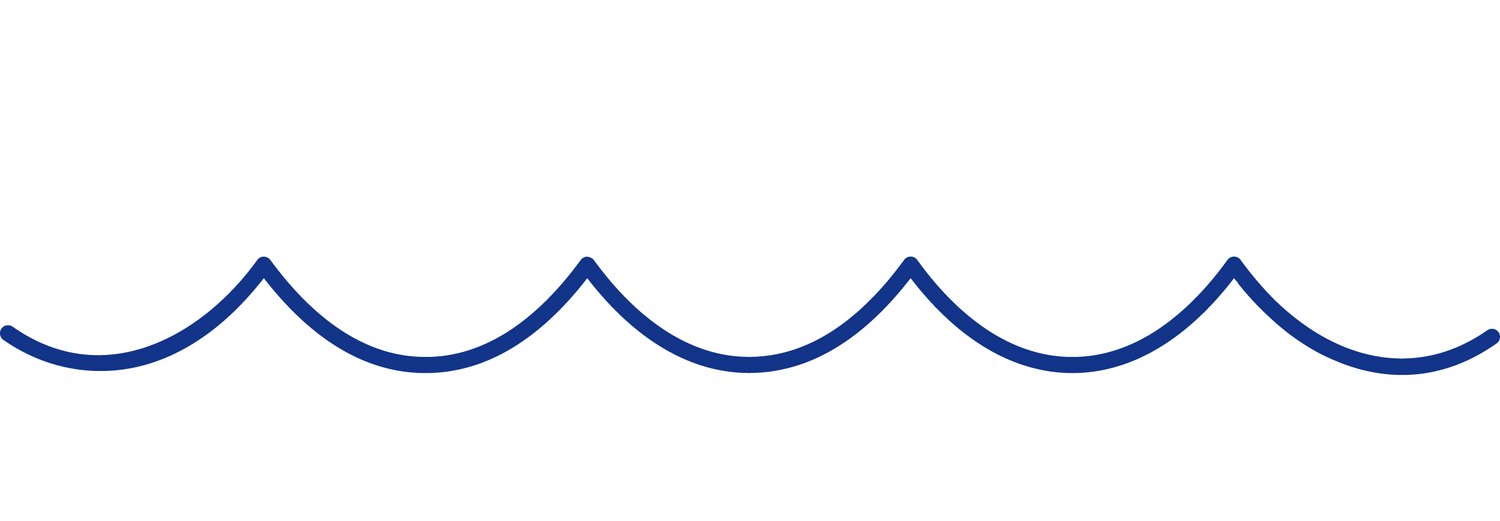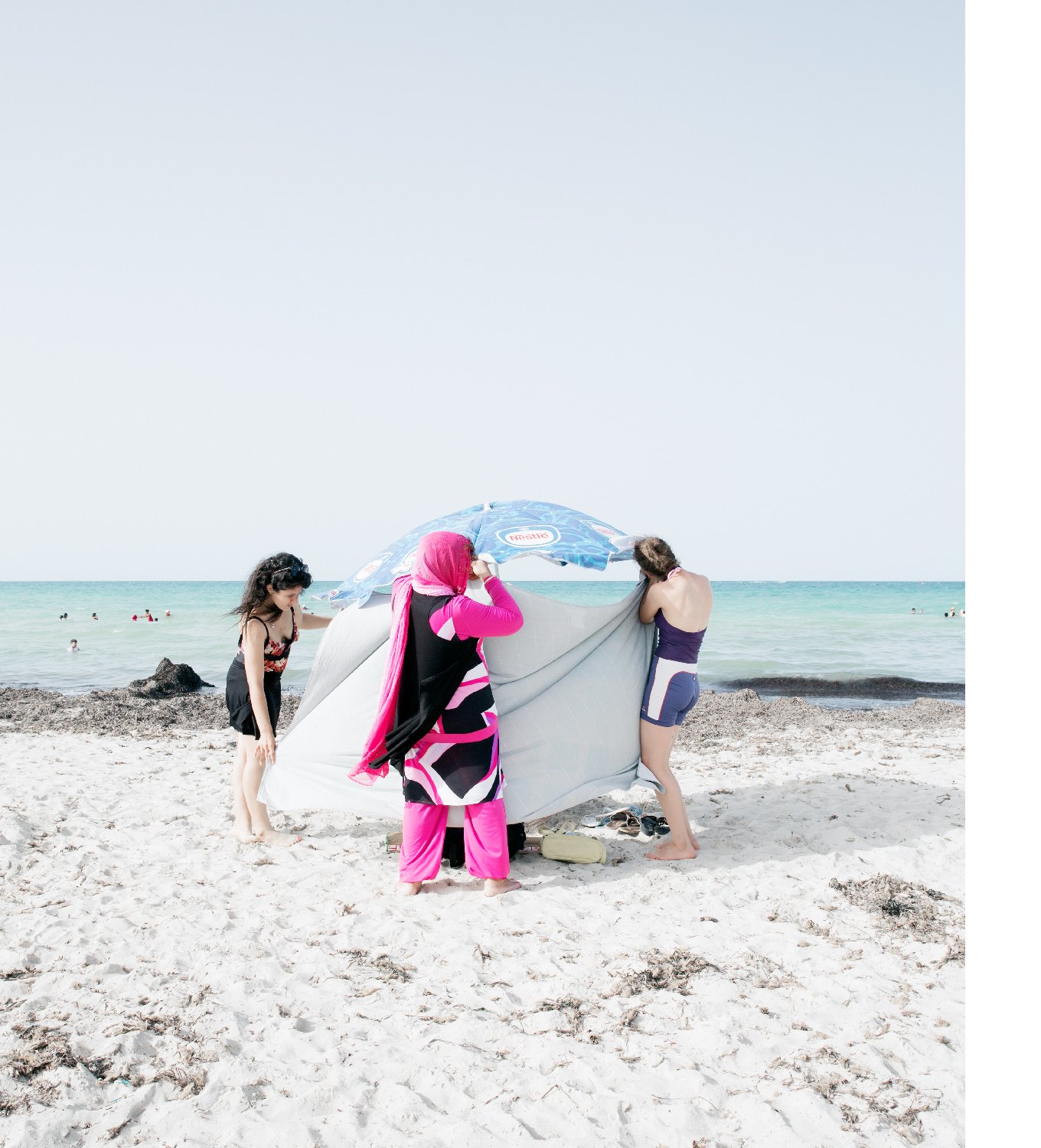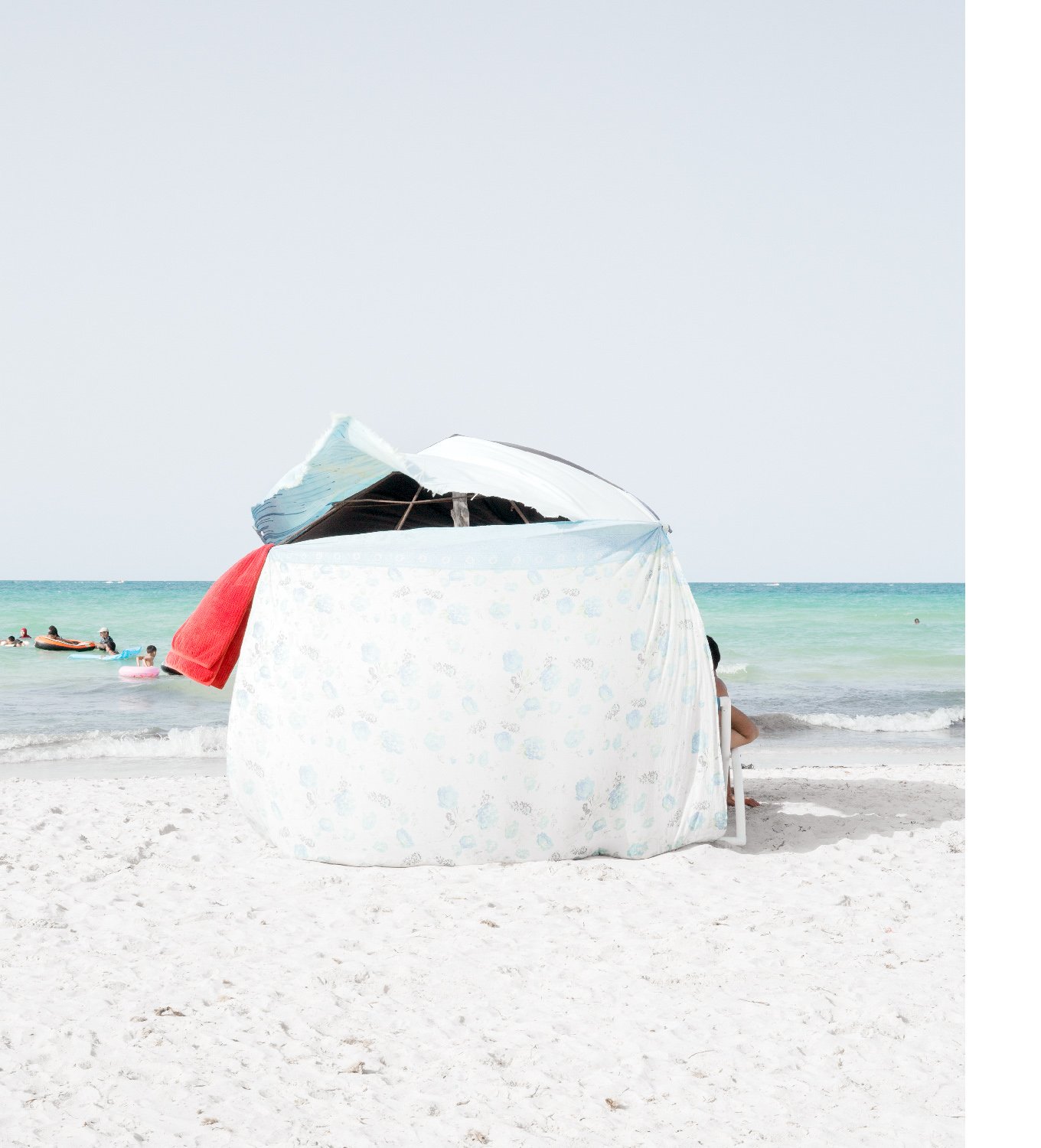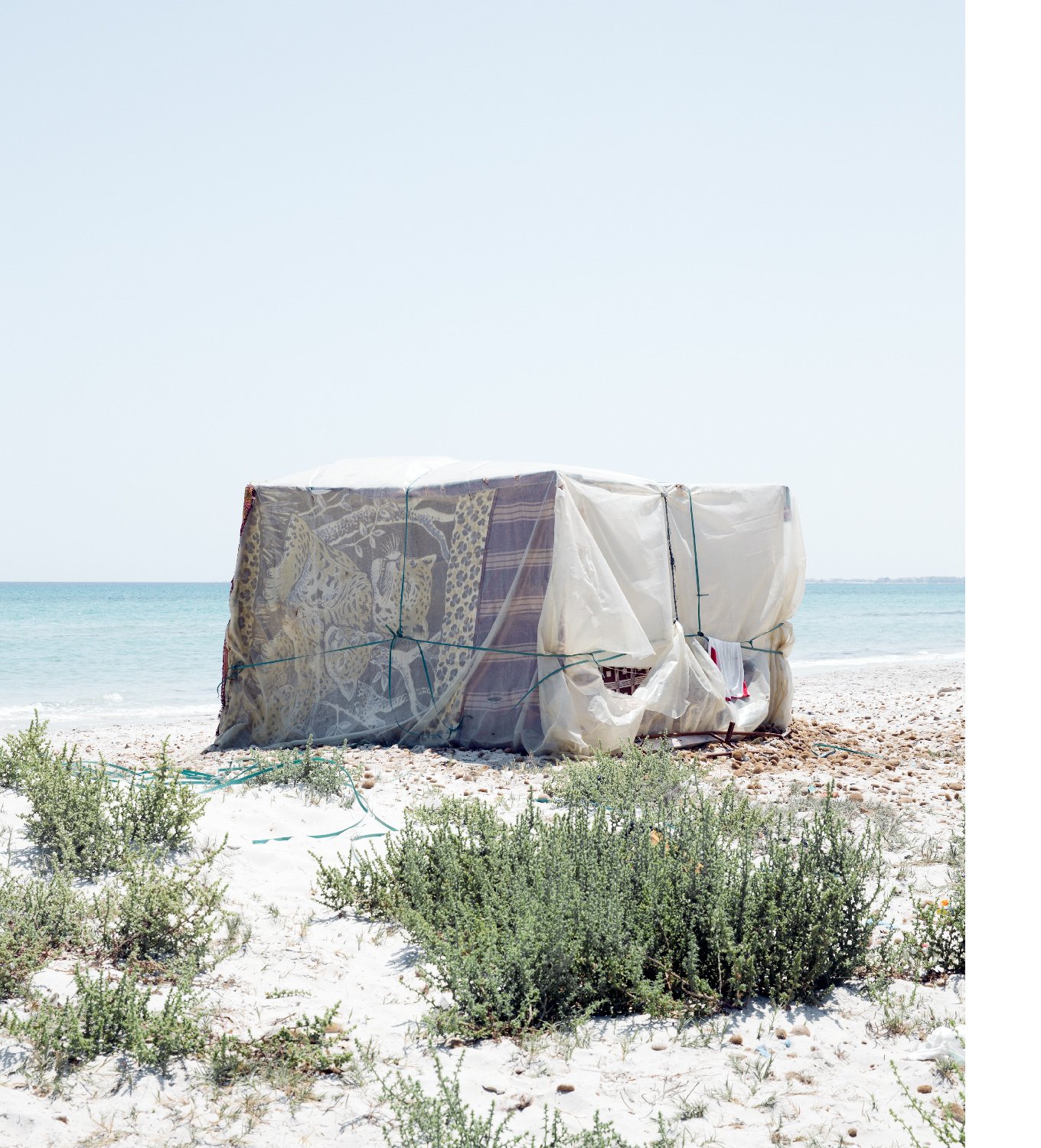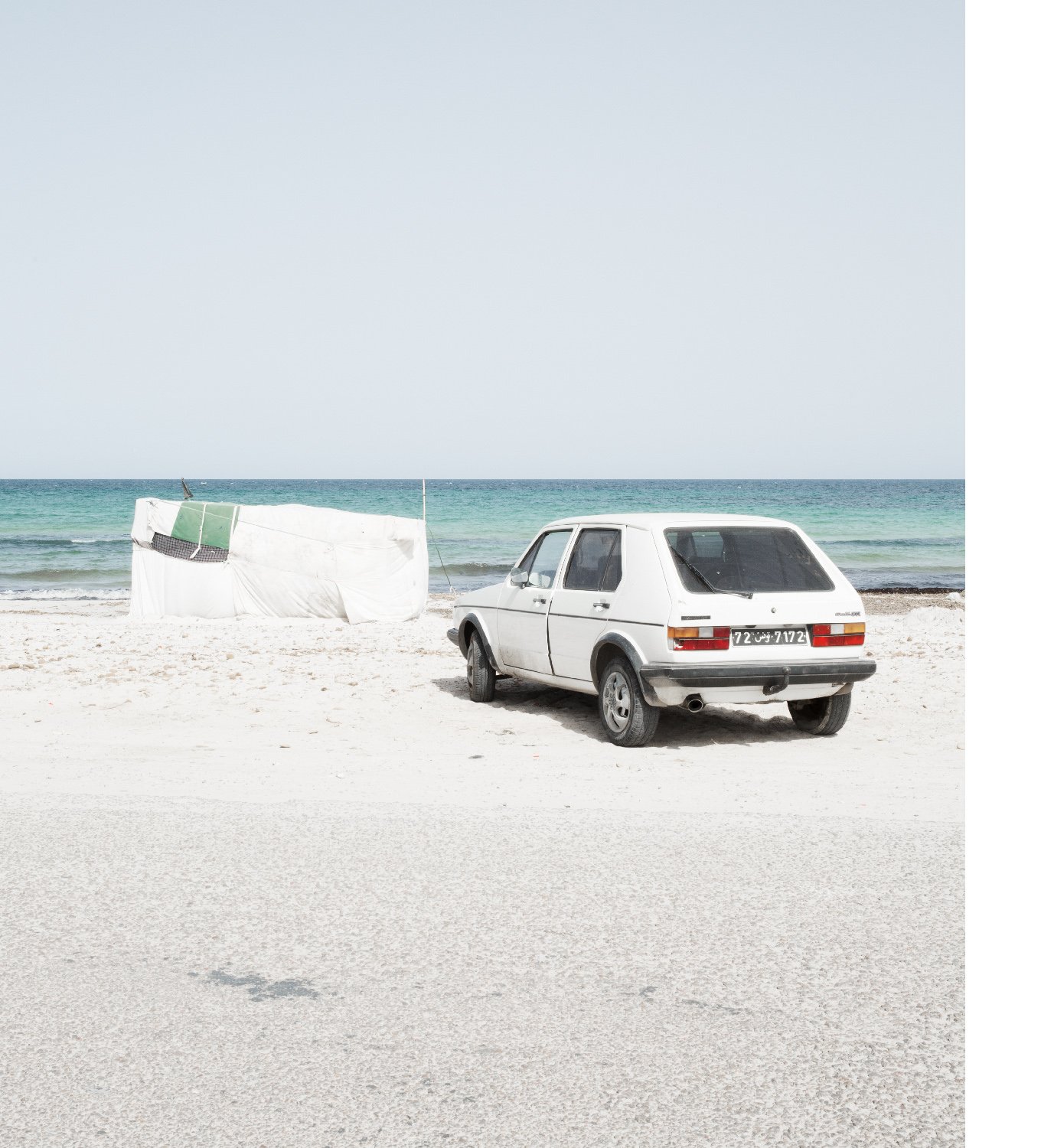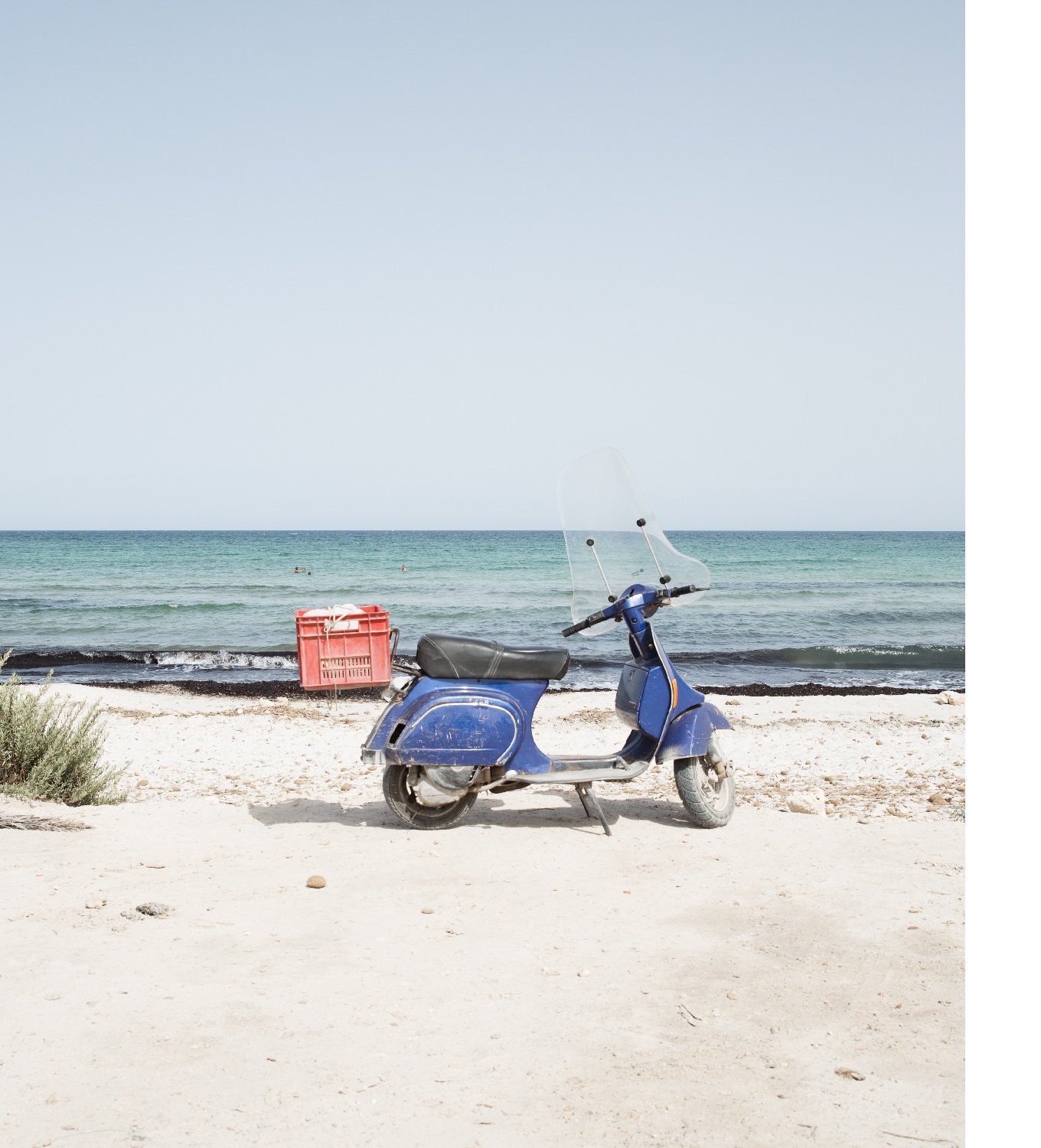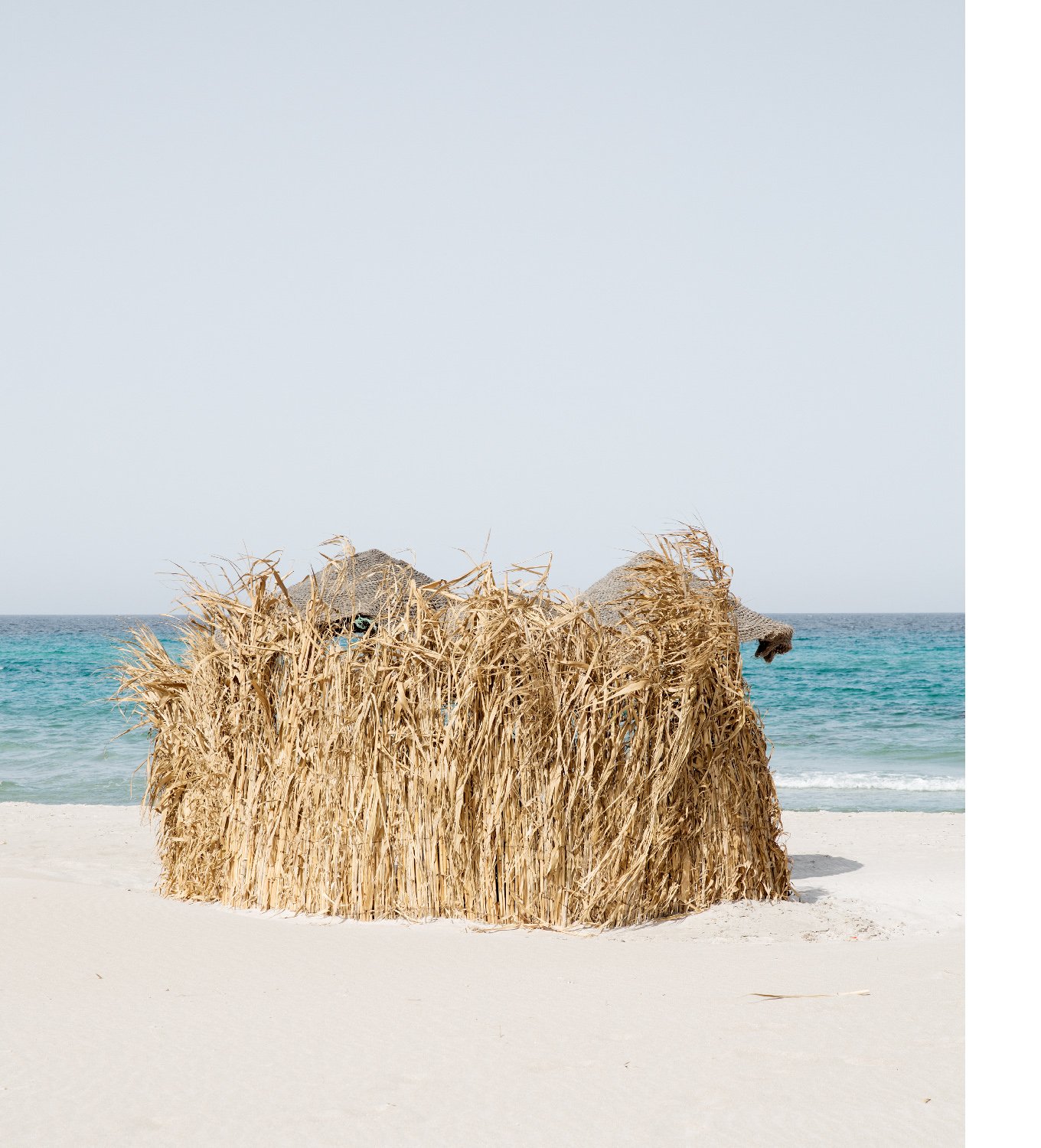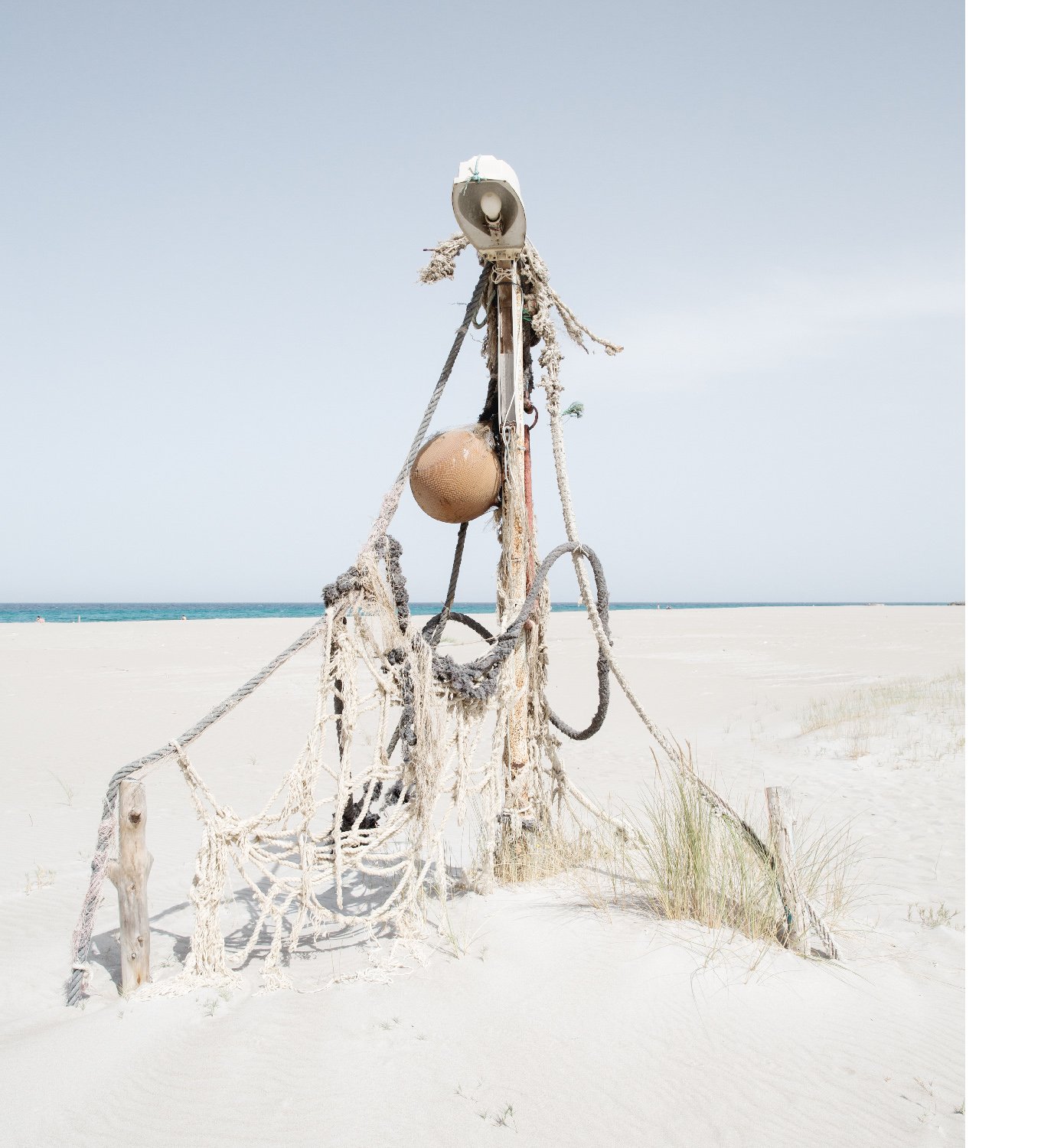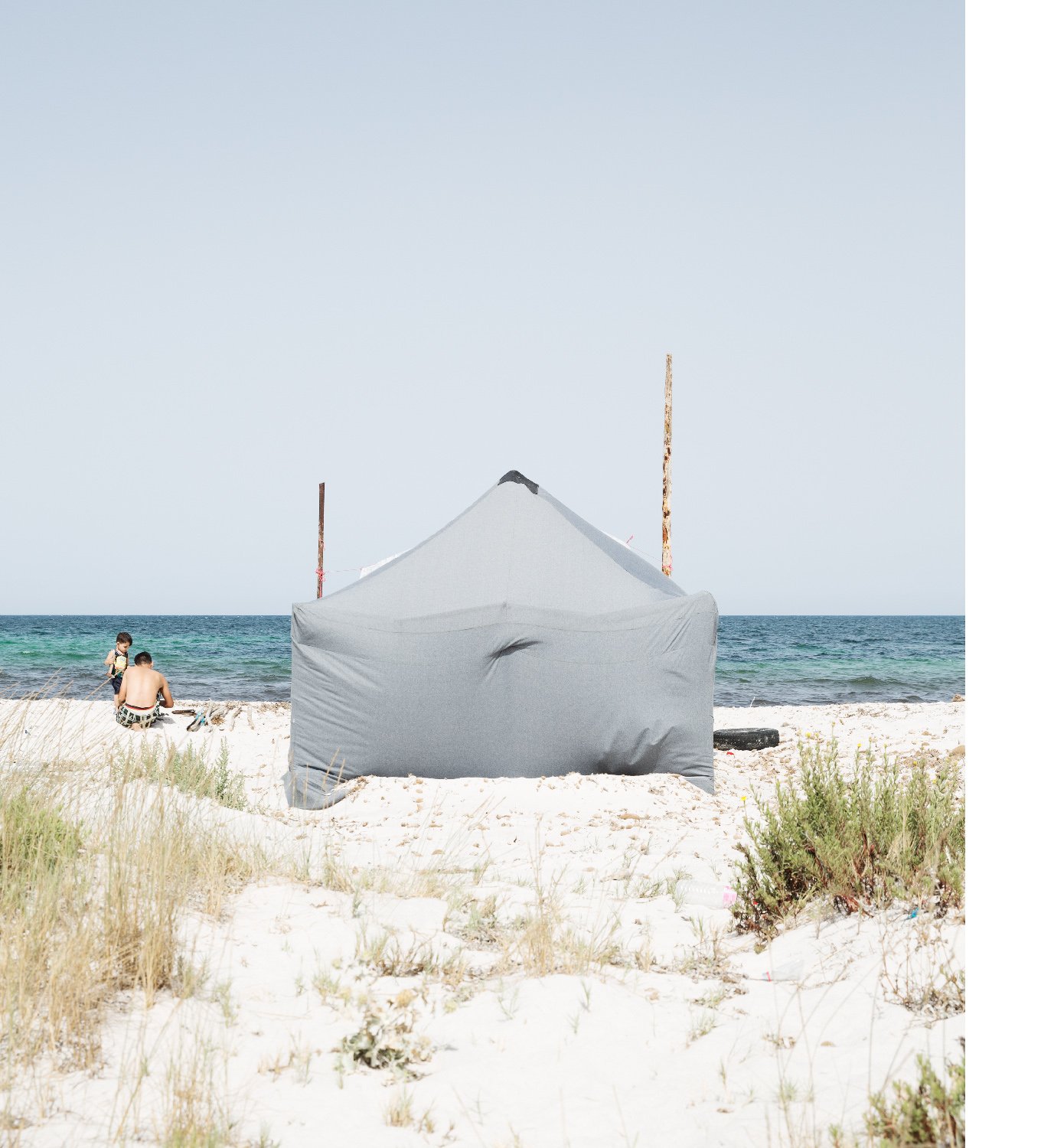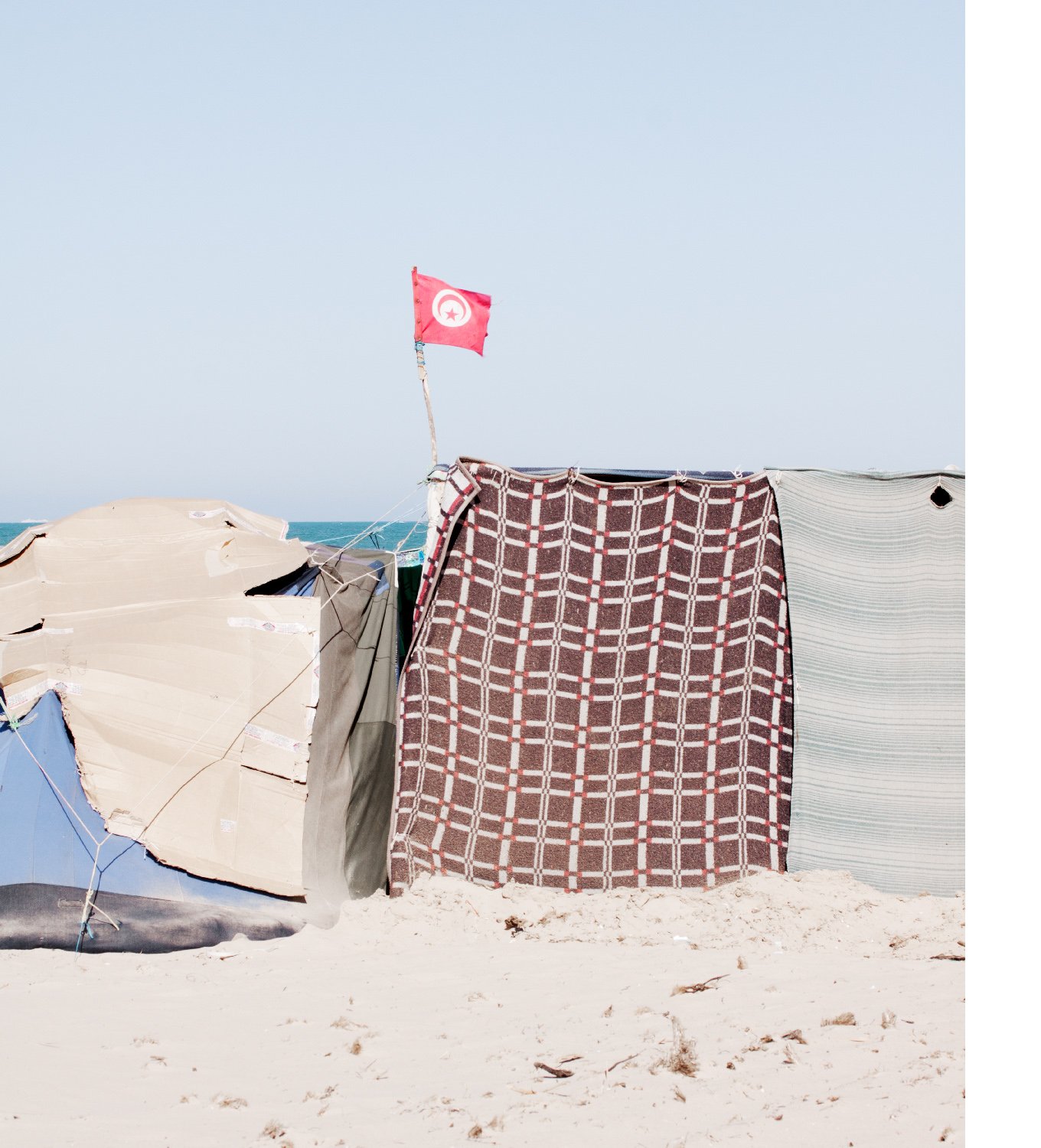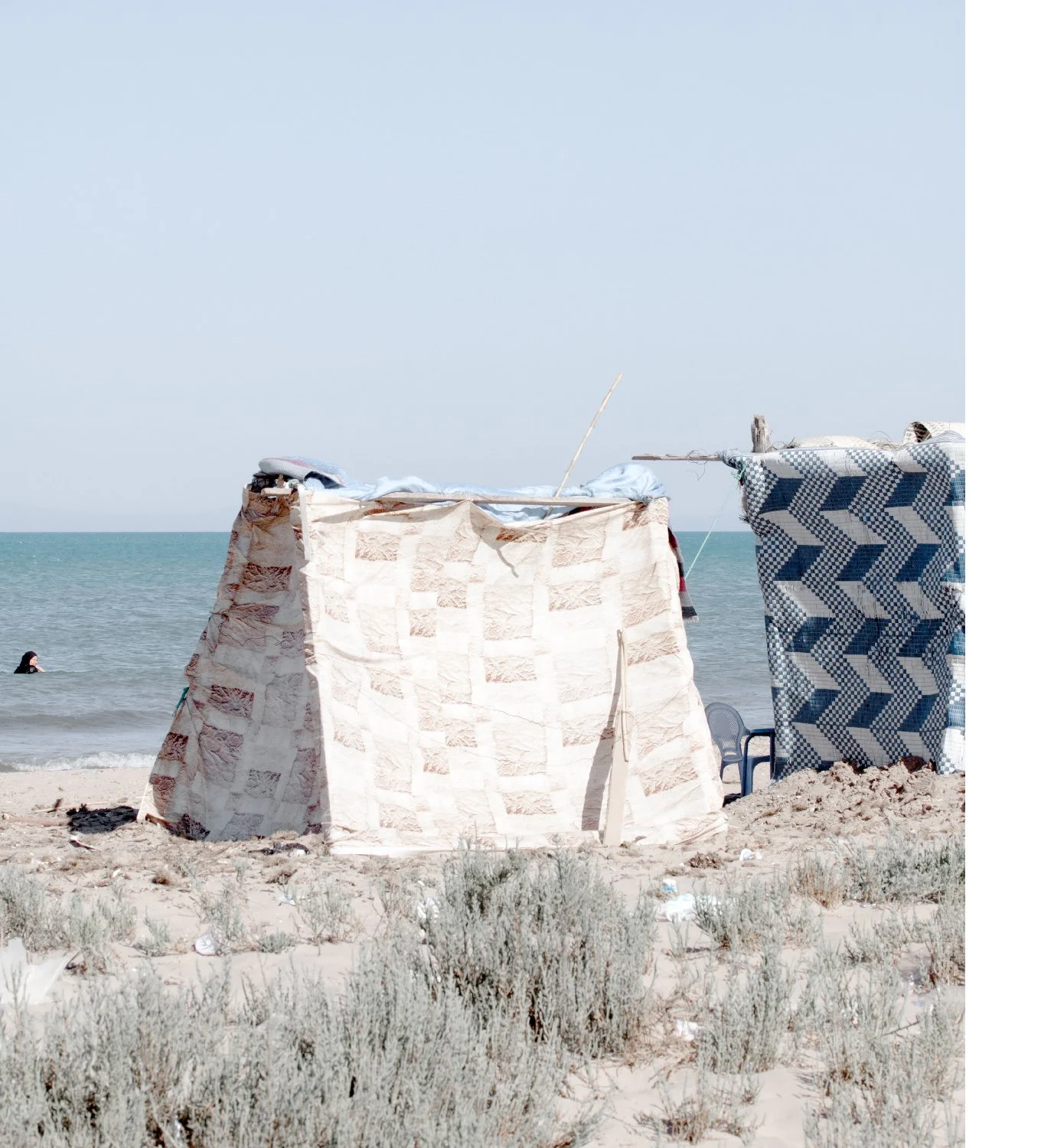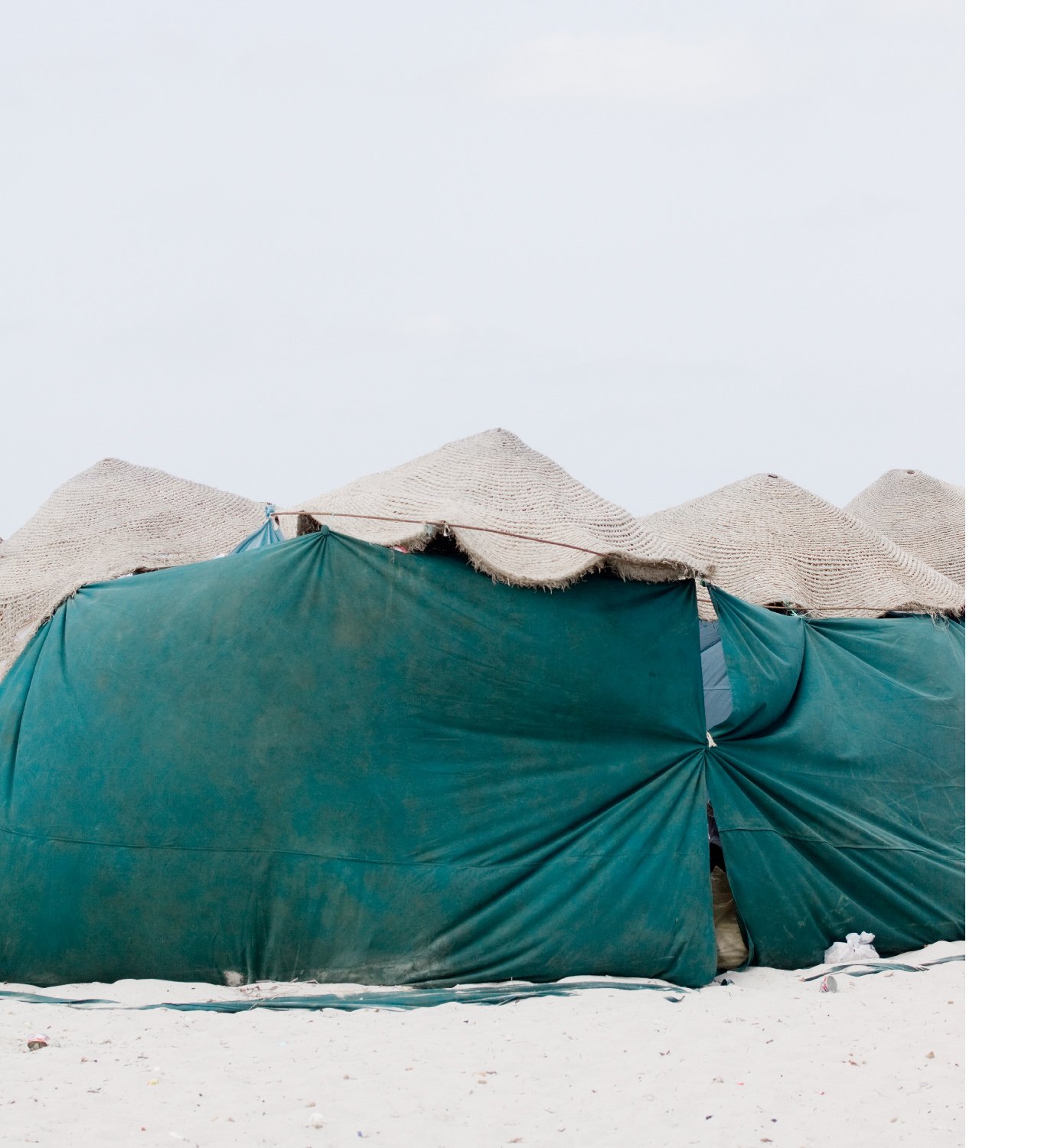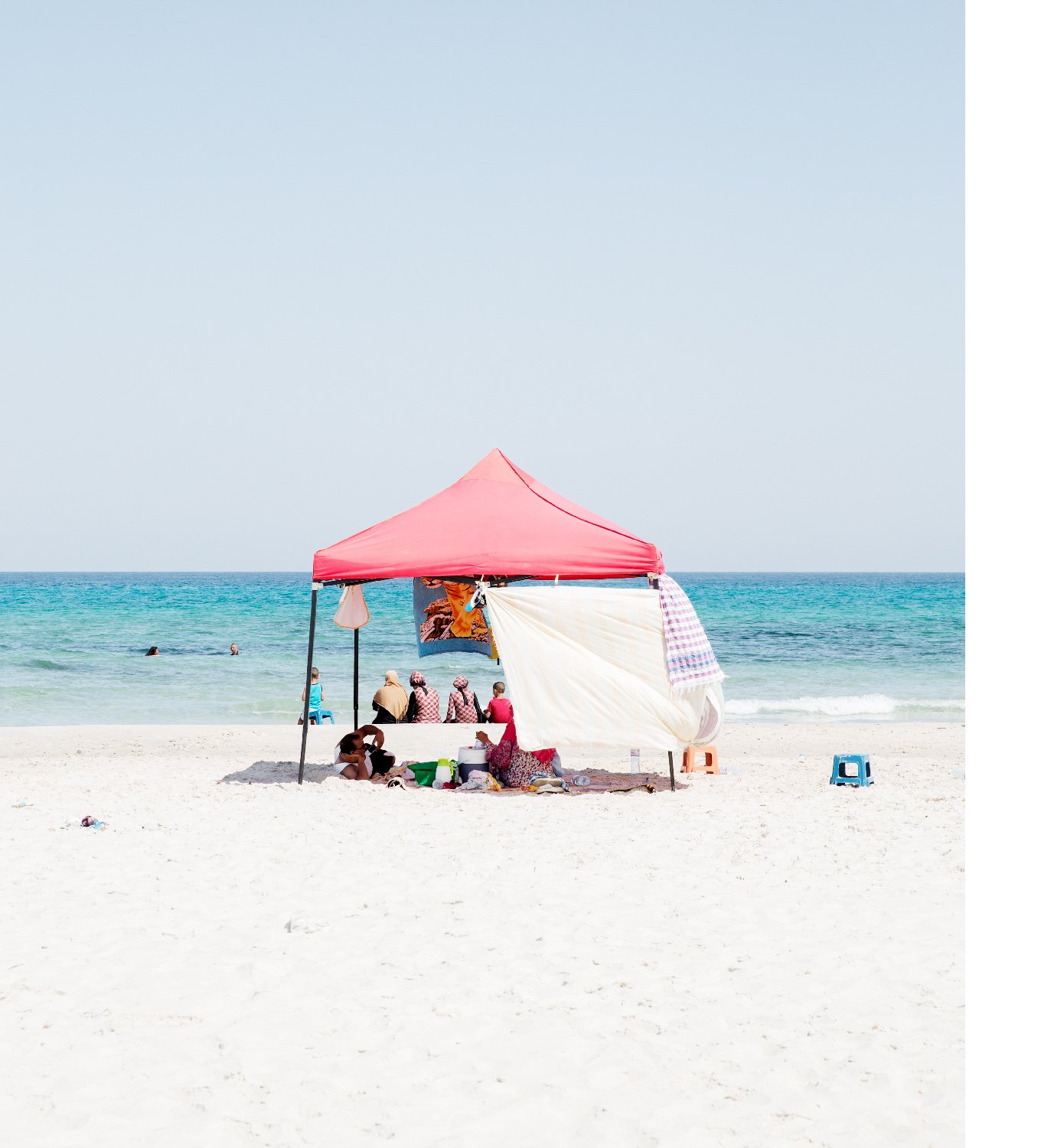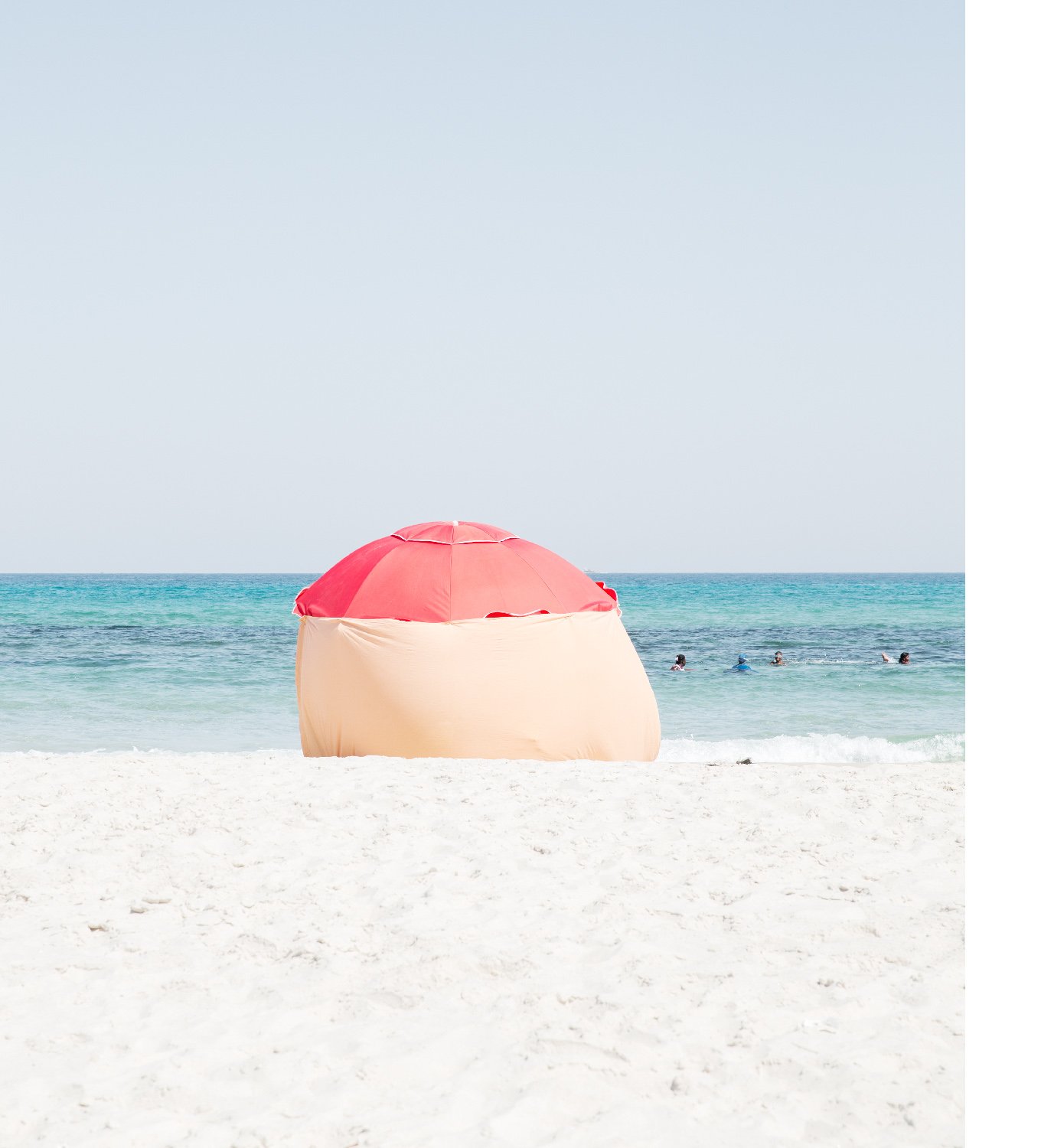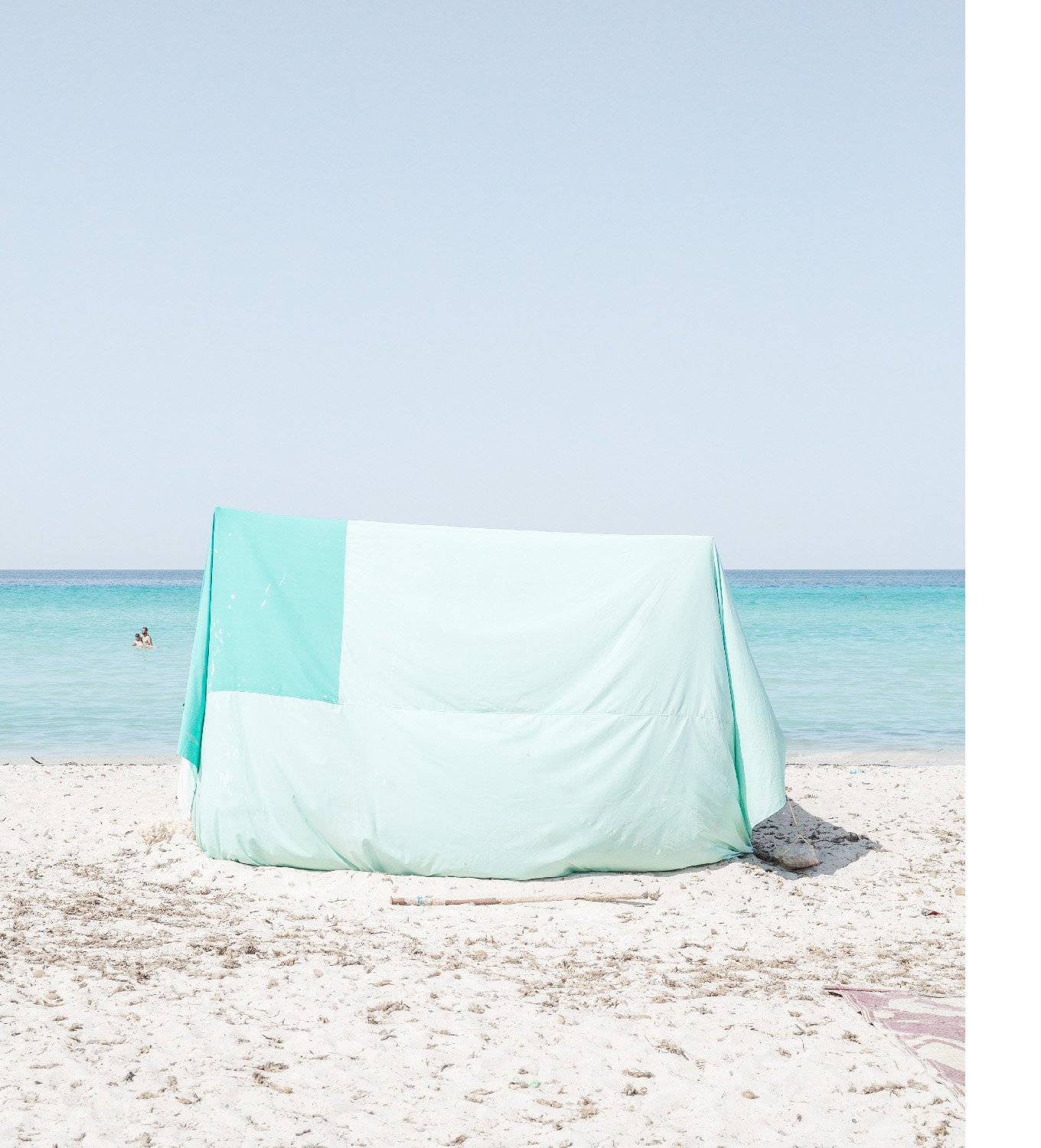Nomad’s Land.
Tirages pigmentaires sur papier archive (Arches).
111,8 x 90 cm (verticales) et 111,8 x 165 cm (horizontales).
En Tunisie, en marge des plages privées des Resort Hotels, la population locale investit chaque été les plages publiques, improvisant le temps d’une journée un habitat éphémère, une micro architecture en connexion avec la nature. Camping sauvage, abri vernaculaire ou expression de la tradition bédouine, ces bulles nomades ancrées dans le sable illustrent autant de solutions mises en œuvre pour profiter pleinement des plaisirs de la plage.
La recherche du confort est une constante dans toute construction humaine. Chacune de ces bulles est une organisation spatiale dont les règles de construction sont dictées par les matériaux utilisés (tapis, nattes, foutas, parasols, bois…), agencés selon les capacités et les choix de chacun. Il en résulte une diversité d’installations, un enchevêtrement complexe d’éléments simples dont l’agencement et l’orientation sont déterminés par la course solaire, l’intensité du vent, la satisfaction fonctionnelle des besoins et des activités.
Horizontalité, verticalité, angulation, courbure, continuité, discontinuité, superposition, dissociation de l’espace construit… Derrière l’apparente simplicité des formes, la combinaison et la juxtaposition de ces éléments constituent des rapports de causalités complexes : les données économiques, sociales et culturelles déterminent ici la réponse architecturale. Dans un environnement livré à ceux qui le défigurent, les Tunisiens érigent spontanément une architecture du bonheur, apaisante et poétique, qui contraste avec l’hégémonie des hôtels étoilés où luxe et confort ne sont souvent que promesses de bonheur.
Expression formelle de la relation mythique et spirituelle des Tunisiens avec leur environnement, cette micro architecture nomade a pour vertu de nous montrer la possibilité de recréer, à échelle humaine, un petit paradis sur terre.
Color pigment prints on archival paper.
44 x 35 inches (vertical) et 44 x 64 inches (horizontal).
In Tunisia, next to Resort Hotels’ private beaches, local people settle in public beaches every summer, improvising an ephemeral habitat for the day, a micro architecture connected with nature. Wilderness camping, vernacular shelters or expression of the Bedouin tradition, these nomads bubbles embedded in the sand show as many solutions implemented to fully enjoy the pleasures of the beach.
The search for comfort is a constant in all human construction. Each of these bubbles is a spatial organization whose structures’ rules are dictated by the materials used (carpets, mats, “foutas”, umbrellas, wood ...), arranged according to the abilities and choices of each. This results in a variety of settlements, a complex web of simple elements whose arrangement and orientation is determined by the solar race, wind intensity, functional happiness of needs and activities.
Horizontality, verticality, angle, curvature, continuity, discontinuity, superposition, dissociation of constructed space ... behind the apparent simplicity of form, the combination and juxtaposition of these elements are complex causal relations : economic social and cultural data, determined by the architectural answer. In an environment delivered to those who disfigure it, Tunisians spontaneously erect an architecture of happiness, soothing and poetic, contrasting with the hegemony of starred hotels, where luxury and comfort are often only promises of happiness.
Formal expression of Tunisians’ mythical and spiritual relationship Tunisians with their environment, this micro nomadic architecture has the virtue of showing us the opportunity to recreate at a human scale, a small paradise on earth.
